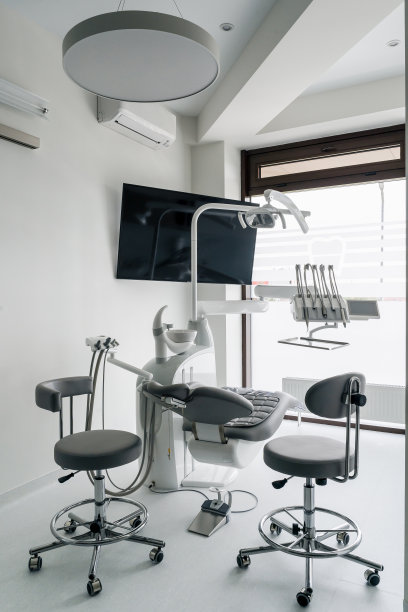Revolutionary Advances in Dental Implants A Comprehensive Guide to Enhanced Oral Health and Aesthetics in Modern Dentistry
Summary: The field of dentistry has witnessed groundbreaking advancements in dental implants, significantly improving oral health and aesthetics. This comprehensive guide delves into the revolutionary techniques, materials, and technologies that enhance the effectiveness of dental implants, ensuring longer-lasting results and greater patient satisfaction. By examining the importance of these advances, we uncover how they are reshaping modern dental practices, elevating patient experiences, and improving overall dental health. This article serves as an essential resource for both dental professionals and patients seeking to understand the latest innovations in the industry.
1. Advanced Materials for Implants

One of the most remarkable advancements in dental implants is the development of innovative materials. Traditional titanium implants have been enhanced with biocompatible materials that promote better integration with the bone. Zirconia implants, for example, offer an aesthetically pleasing option that can match the natural color of teeth while providing similar structural benefits to titanium.
These advanced materials also reduce the risk of complications post-surgery. With improved biocompatibility, patients experience lower rates of inflammation and quicker recovery times. Furthermore, these materials are resistant to corrosion, ensuring longevity and stability of the dental implants over the long term.
In addition to titanium and zirconia, new bioactive coatings are being researched. These coatings can encourage cellular attachment and growth, leading to a more efficient osseointegration process. Overall, the introduction of advanced materials is a crucial part of the evolution of dental implant technology.
2. Cutting-Edge Implant Techniques
Modern dentistry now employs cutting-edge techniques that significantly enhance the success rates of dental implants. Among these is the use of guided implant surgery, which allows for precise placement of implants using 3D imaging technology. This ensures that the implant is situated in the optimal position, reducing the risk of complications and improving outcomes.
Another groundbreaking technique is the all-on-4 approach. This innovative strategy enables the placement of a full set of teeth using only four implants, drastically reducing the number of surgeries necessary for complete restoration. Such techniques are not only time-efficient but also cost-effective, making them highly appealing to patients looking for comprehensive solutions.
Moreover, the introduction of immediate loading protocols allows patients to receive their temporary teeth on the same day as the implant placement. This innovation enhances patient comfort and satisfaction while minimizing the time spent without teeth. Each of these techniques represents a significant leap forward in the field of dental implantology.
3. Innovative Digital Technologies in Implants
The integration of digital technologies into dental implant procedures has transformed the patient experience. With tools such as computer-aided design (CAD) and computer-aided manufacturing (CAM), dental professionals can create highly customized implants tailored to each patients unique dental anatomy. This level of personalization enhances the fit and function of the implants, leading to improved outcomes.
Additionally, digital scanning has streamlined the diagnostic process, allowing for more accurate imaging and planning. This eliminates the need for messy traditional impressions and significantly reduces appointment times. Patients benefit from a more comfortable experience while clinicians gain efficiency in their workflows.
Augmented reality (AR) and virtual reality (VR) are also making waves in patient education and surgeon training. These technologies provide a visual representation of the procedures, helping patients understand their treatment options and reducing anxiety. For dental professionals, AR and VR offer immersive training environments to practice intricate implant procedures in a risk-free setting.
4. Enhanced Patient Care and Outcomes
The advancements in dental implants culminate in enhanced patient care and outcomes. Todays dental practices focus on patient-centered approaches, ensuring that each individual feels informed and comfortable throughout their treatment journey. This emphasis on communication and education contributes to higher rates of treatment acceptance and satisfaction.
Moreover, these innovations lead to better functional results. Patients can enjoy improved chewing efficiency and aesthetic satisfaction with modern dental implants. Enhanced techniques and materials contribute to the overall quality of life, allowing individuals to regain confidence in their smiles.
Finally, ongoing research and development in the field promise continuous improvements. As dental professionals adopt these revolutionary advances, we can expect further enhancements in both technology and patient care, ensuring that dental implants remain a reliable solution for those seeking restoration.
Summary:
The advancements in dental implants represent a pivotal shift in modern dentistry, impacting both oral health and aesthetics. By embracing innovative materials, advanced techniques, and digital technologies, dental practices are enhancing patient care and treatment outcomes. With ongoing progress, the future for dental implants looks brighter, promising even more efficient and satisfying solutions for patients.
This article is compiled by Vickong Dental and the content is for reference only.



